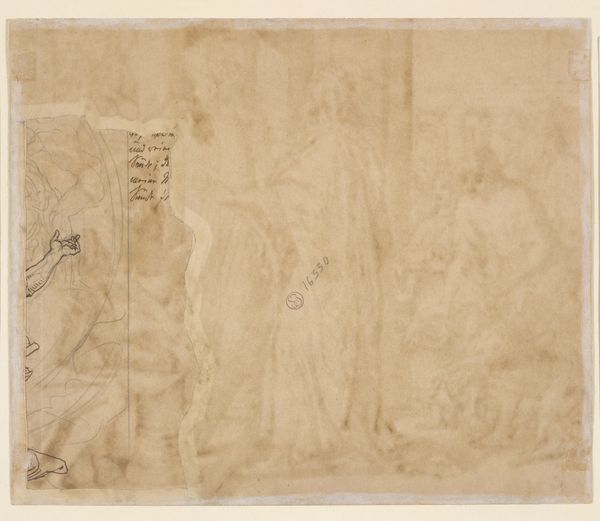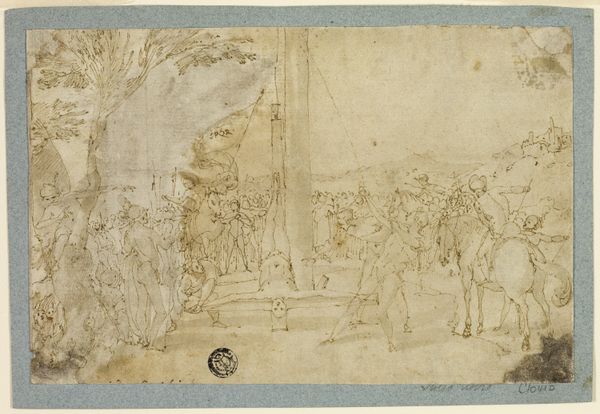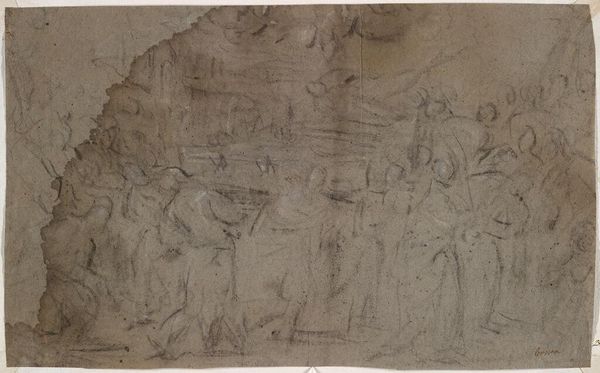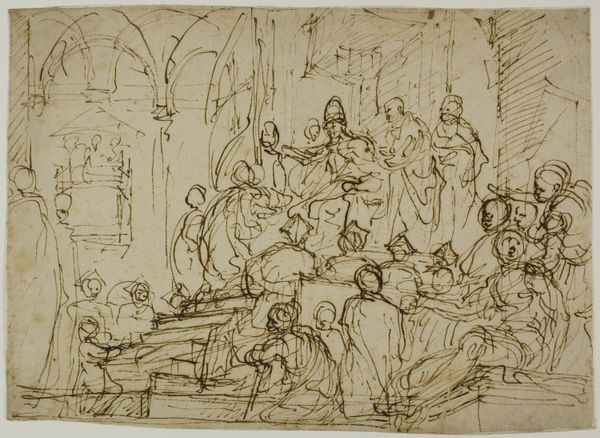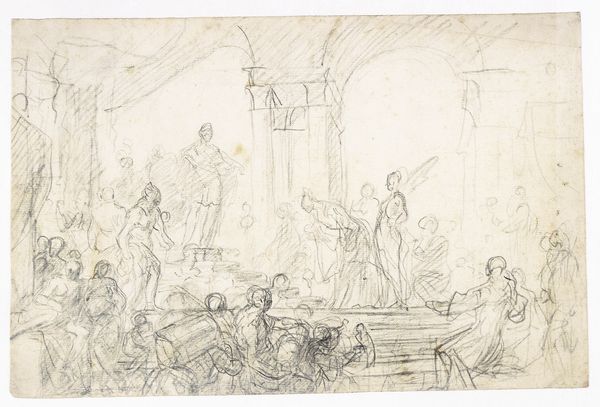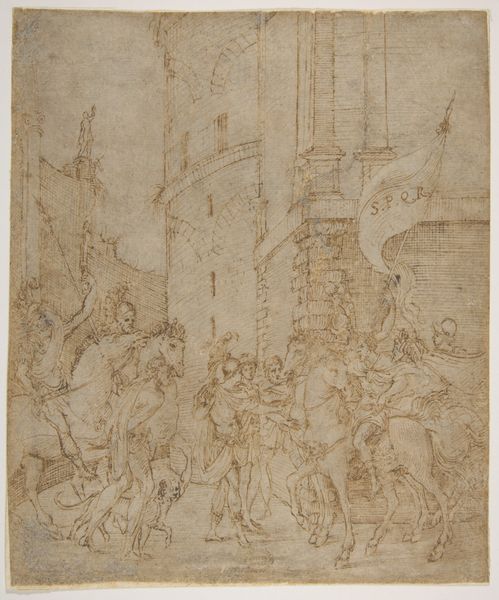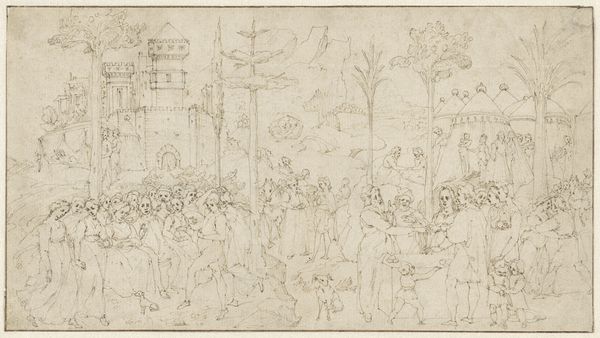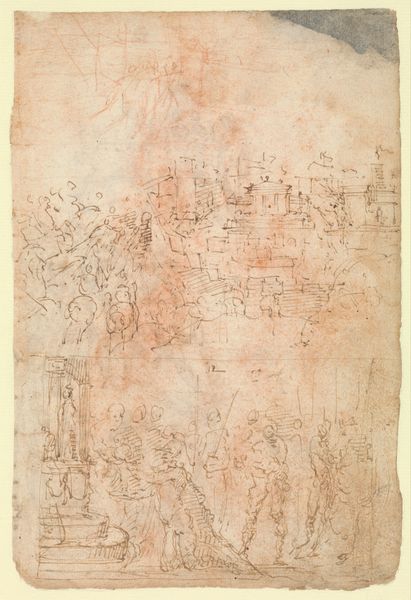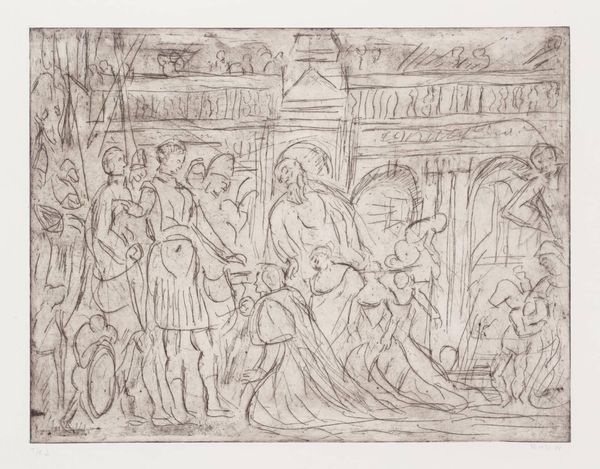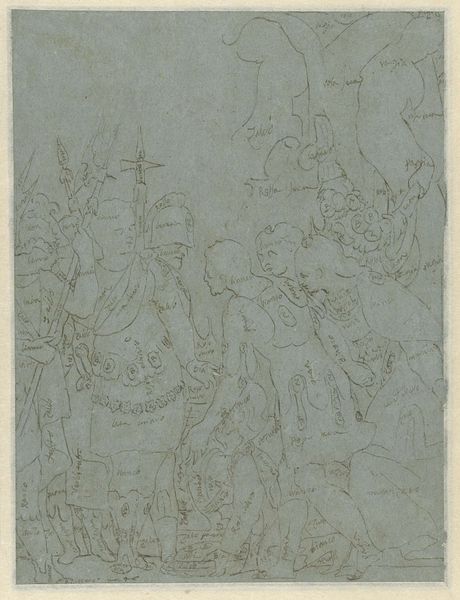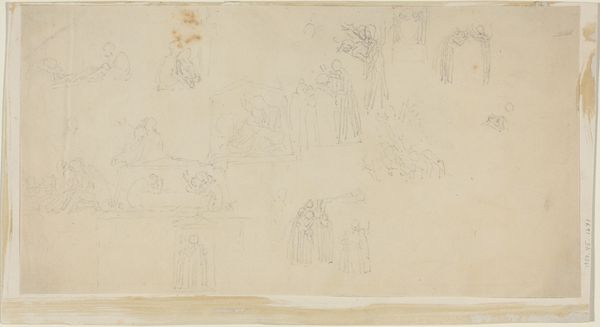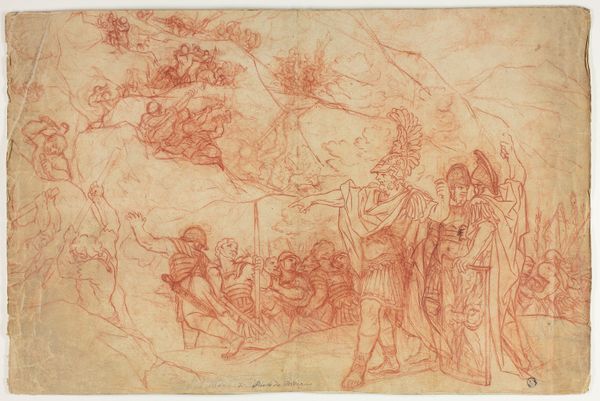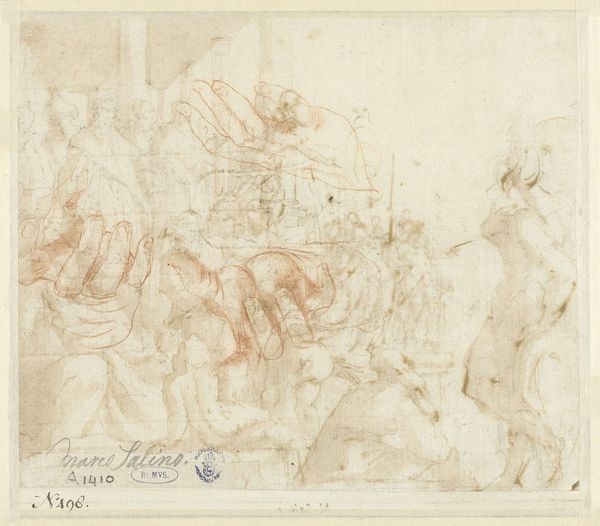
Solomon and the Queen of Sheba (recto); Sketch of the Queen of Sheba (verso) 1590s
0:00
0:00
drawing, print, paper, ink, pen
#
portrait
#
drawing
#
narrative-art
# print
#
figuration
#
paper
#
ink
#
line
#
pen
#
history-painting
#
italian-renaissance
#
italy
#
watercolor
Dimensions: 130 × 430 mm
Copyright: Public Domain
Curator: This is "Solomon and the Queen of Sheba," a pen and ink drawing on paper from the 1590s by Bernardo Castello, currently held at the Art Institute of Chicago. It strikes me as incredibly intricate, almost frenetic in its composition, but I'm also struggling to decipher it all. What's your take? Editor: I'm drawn to the way Castello uses line to create depth and movement. The figures seem to surge across the page. Consider, however, the formal arrangement of elements in relation to each other; How would you describe the relationship between the various figural groupings? Curator: The clusters of figures, defined by variations in line weight and density, form a visual rhythm that leads the eye across the composition. Notice how the Queen's procession creates a counterpoint to Solomon’s enthroned court? The architecture, though rudimentary, acts as a structuring element, segmenting the space. Editor: Yes, and how do you think the architecture reinforces the narrative? The throne and columns create a visual barrier, don't they? Curator: Precisely. It divides the earthly from the divine. I am especially taken by Castello's mark-making here. He used different pens and perhaps different inks to create tonal variation. The linear quality lends the work dynamism. Do you agree? Editor: I do. The quality of line suggests an interest in light and shadow, which lends a feeling of depth. But are we missing something by focusing on form alone? What about the historical context of the Solomon and Sheba narrative? Curator: One could pursue those avenues; however, by focusing on Castello's technique— the penmanship, if you will—we come to a closer understanding of his choices as an artist. How the lines intersect, diverge, and coalesce tell a story of artistic intention. Editor: That’s a new perspective for me! I hadn't considered analyzing narrative through pure mark-making alone. Curator: Understanding the mechanics of art making is crucial. Seeing line as more than just representation opens doors to understanding artistic intent, allowing a closer intimacy with the work.
Comments
No comments
Be the first to comment and join the conversation on the ultimate creative platform.
